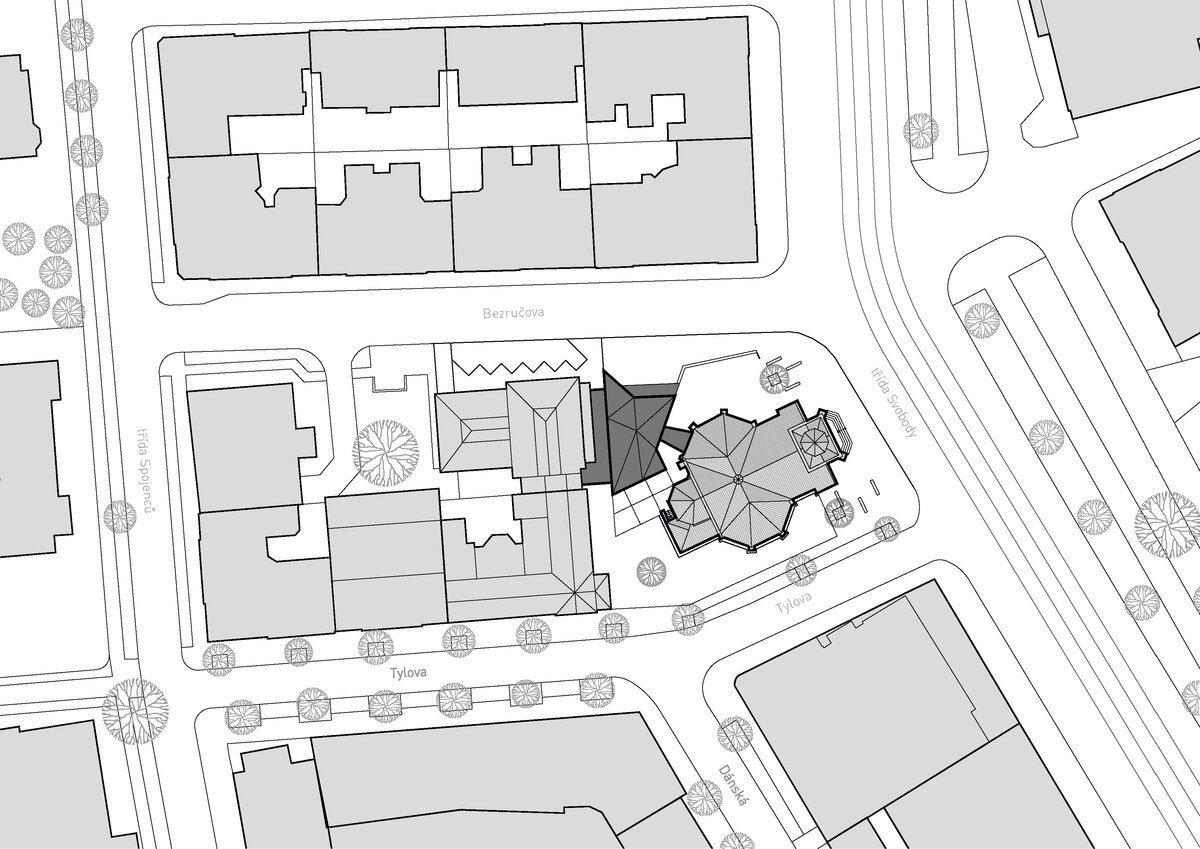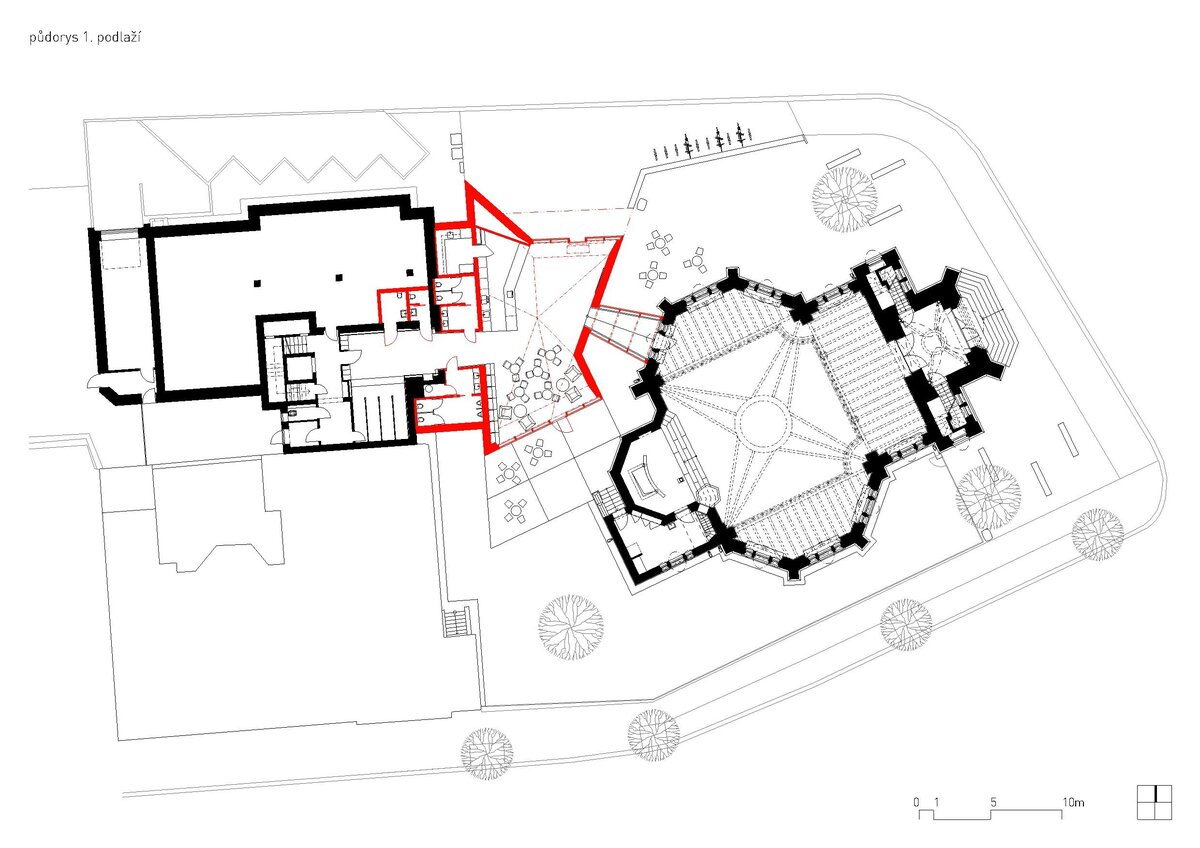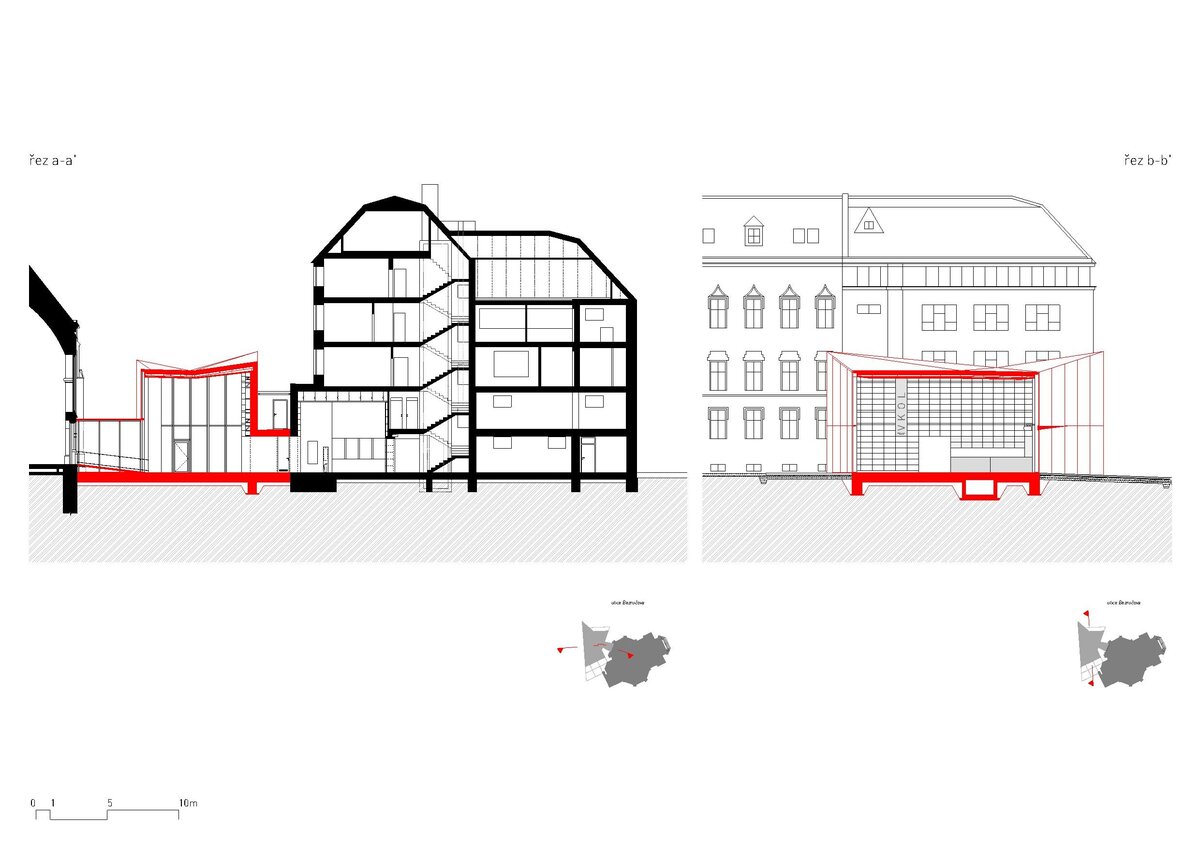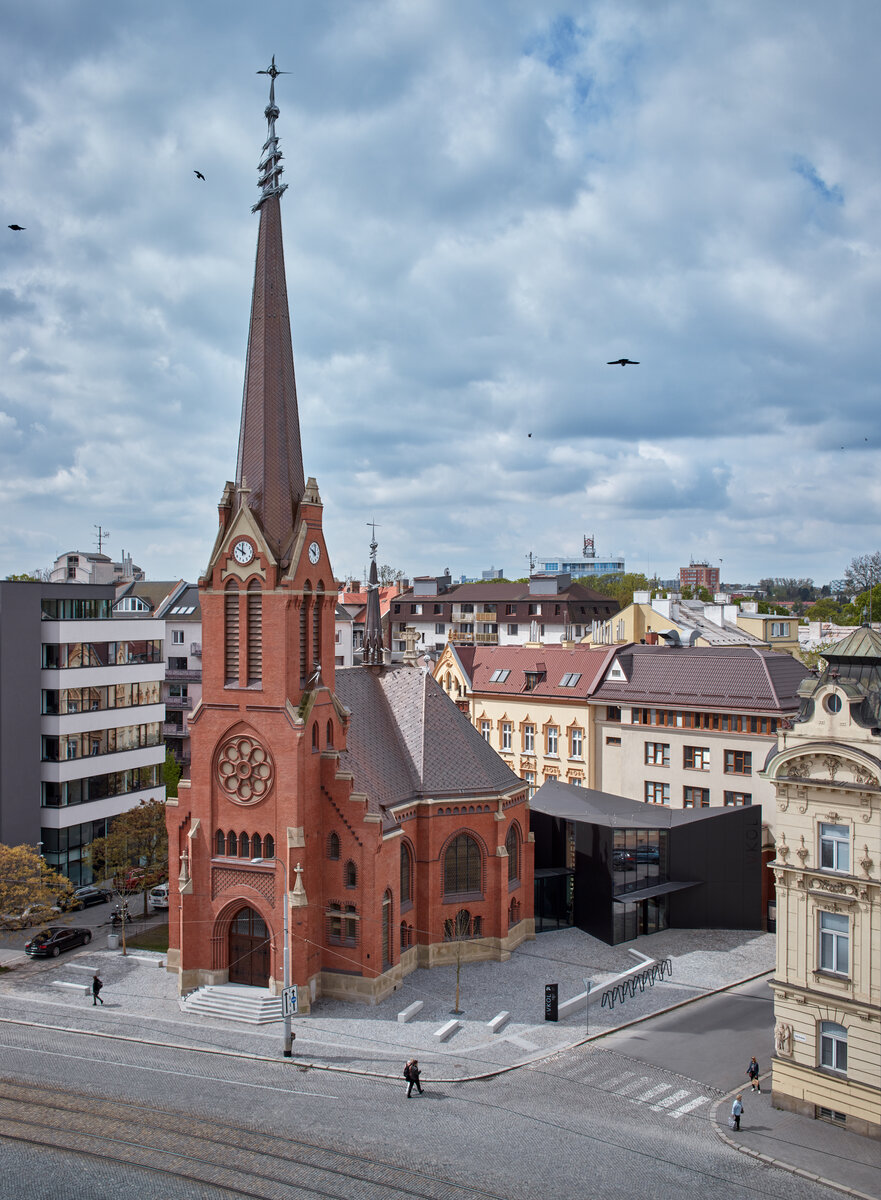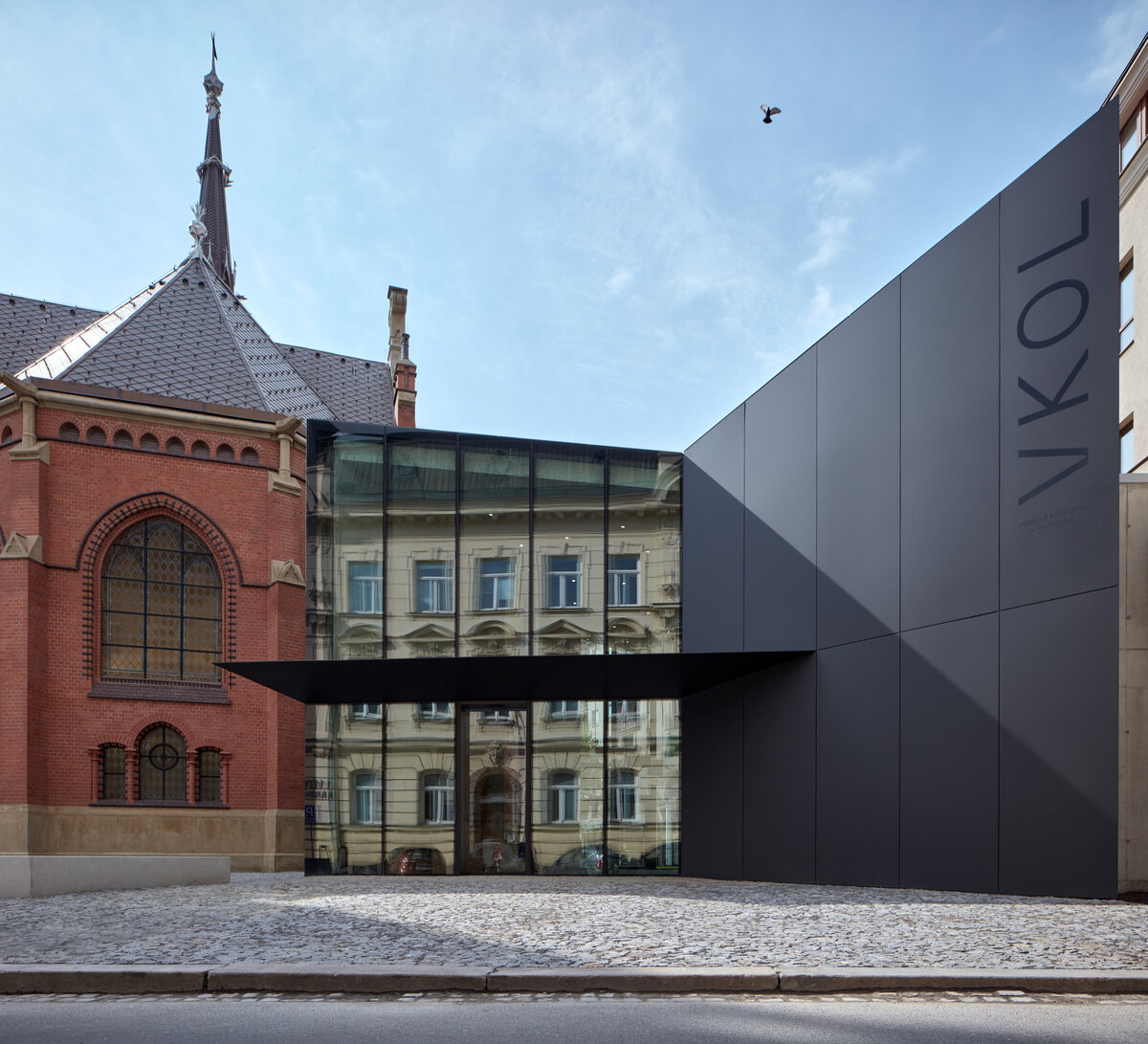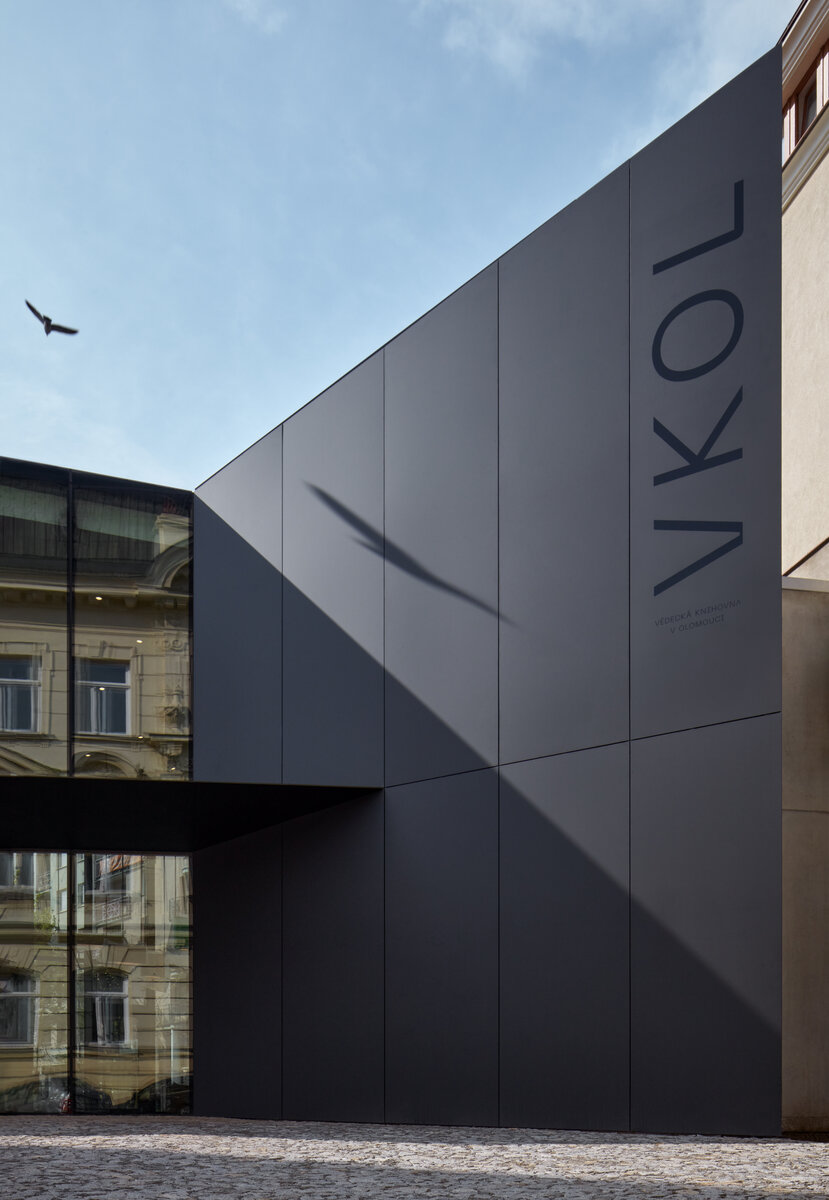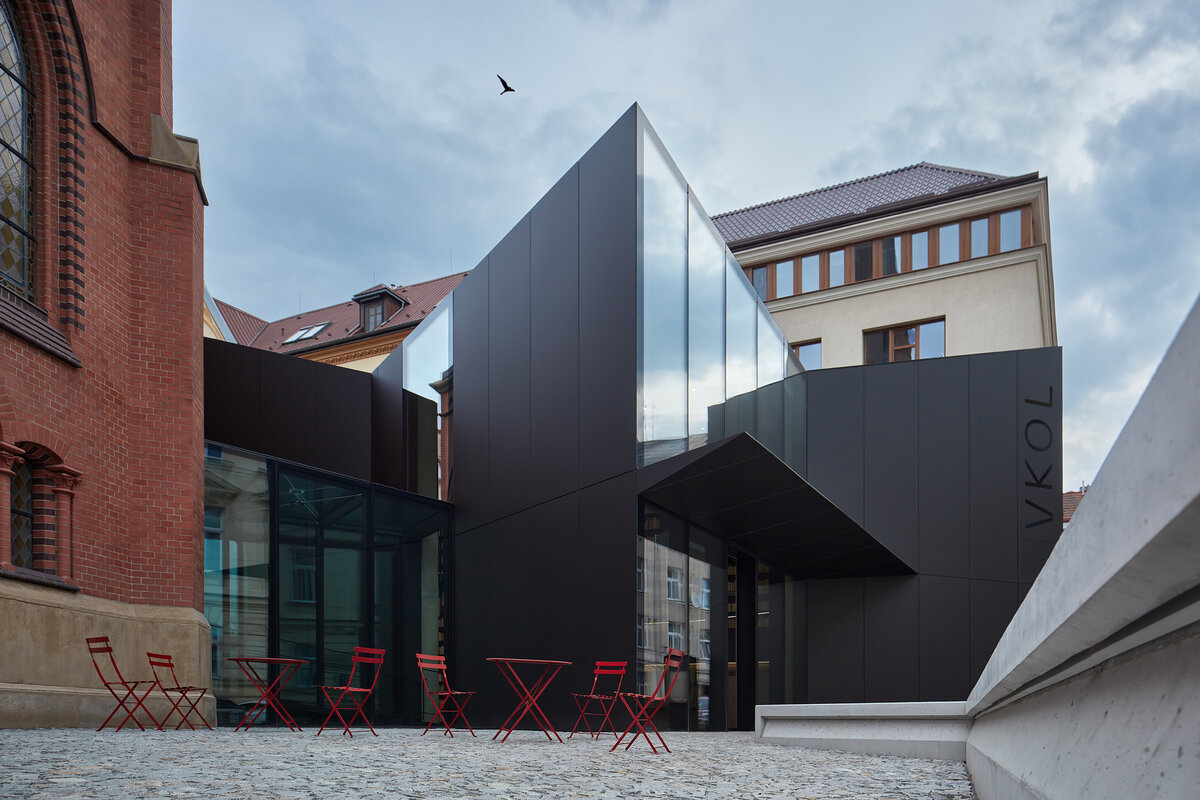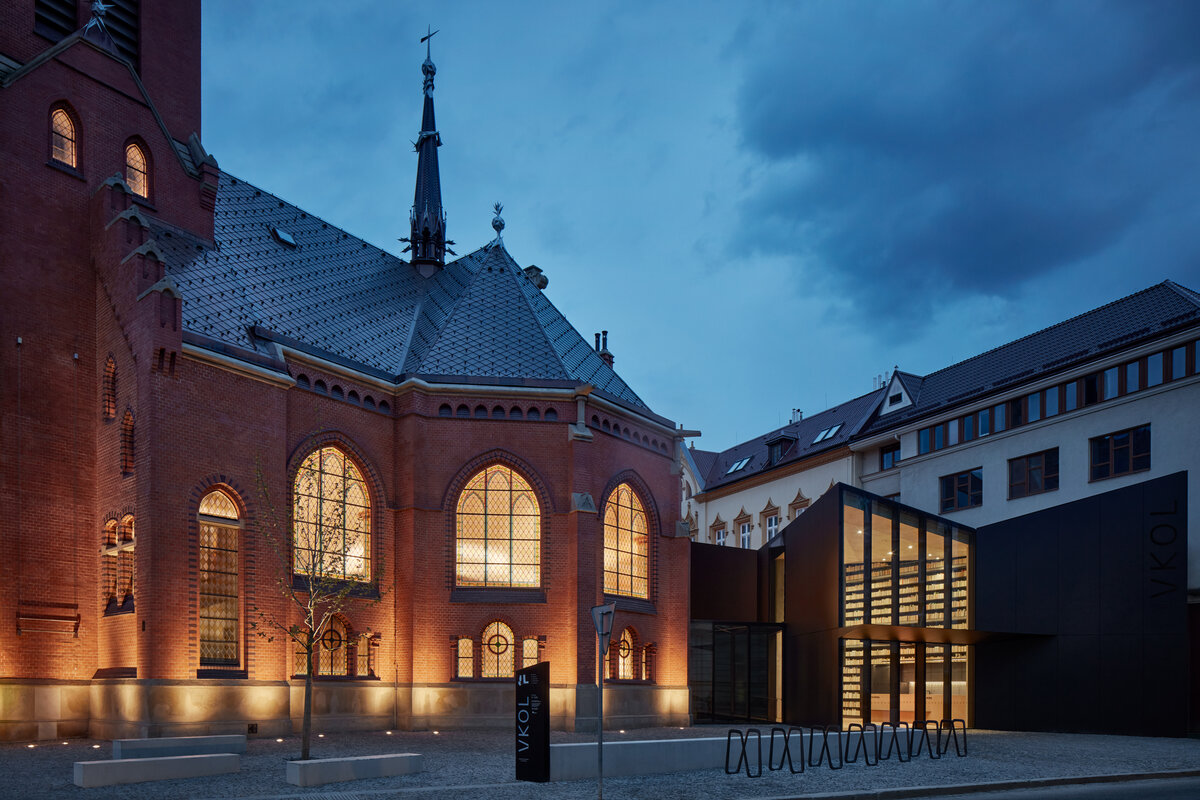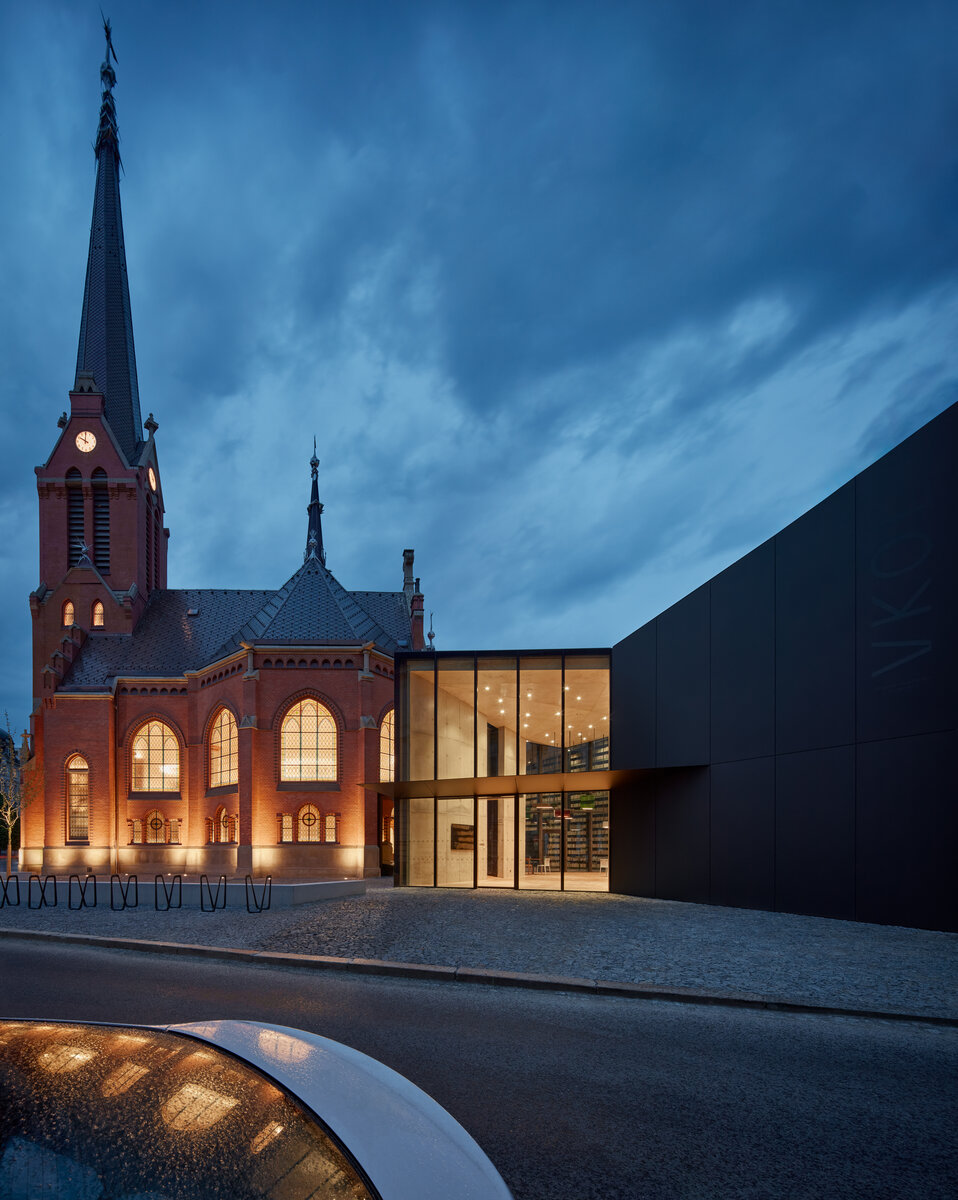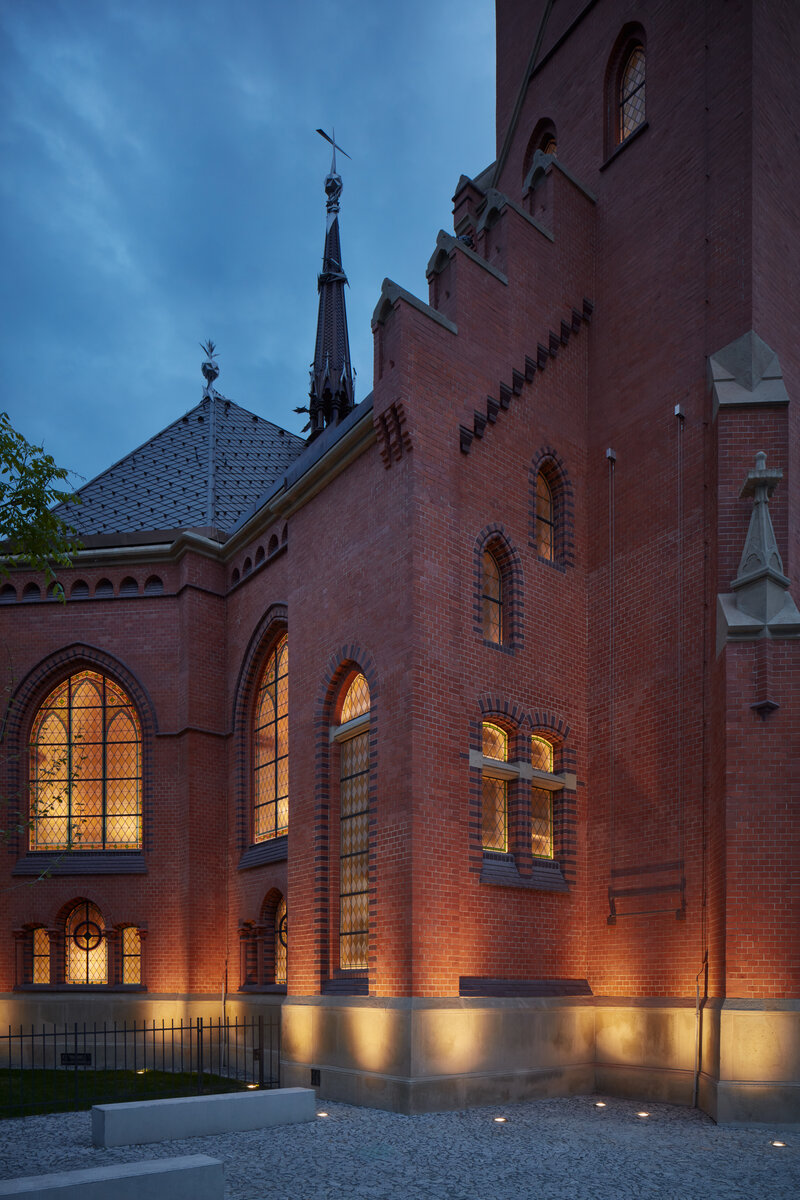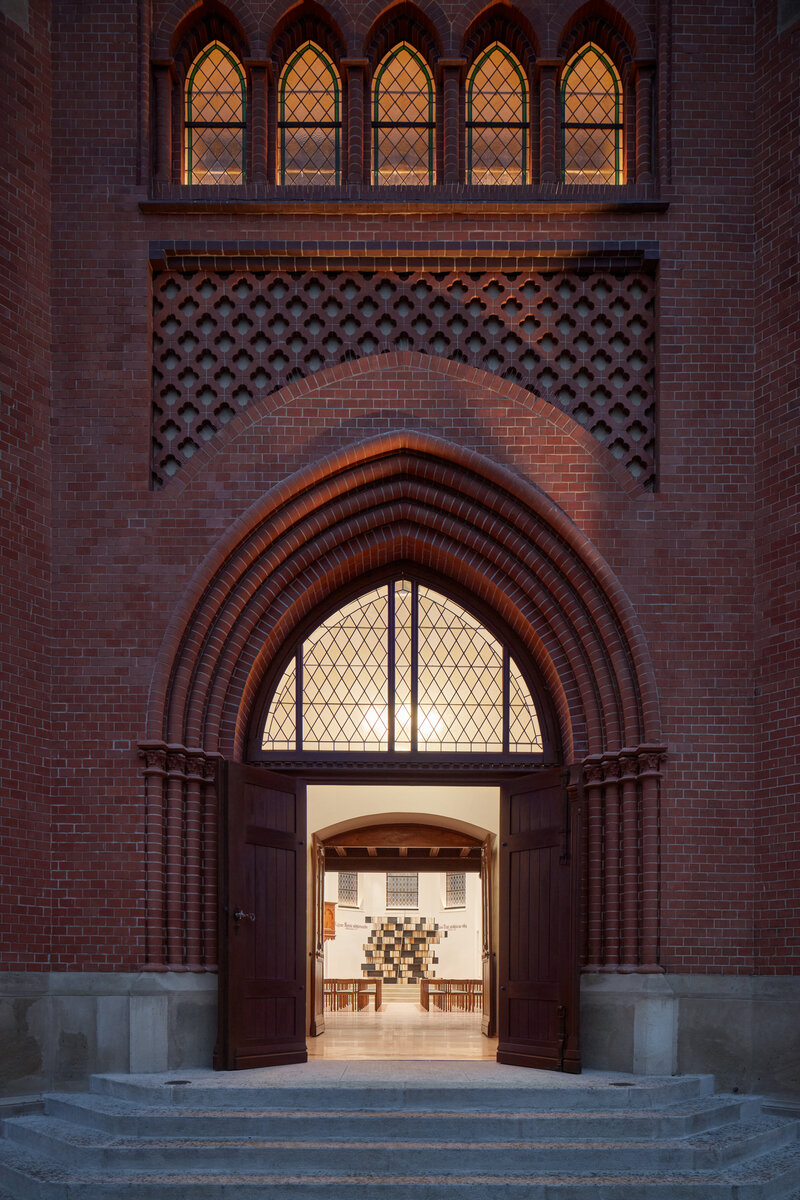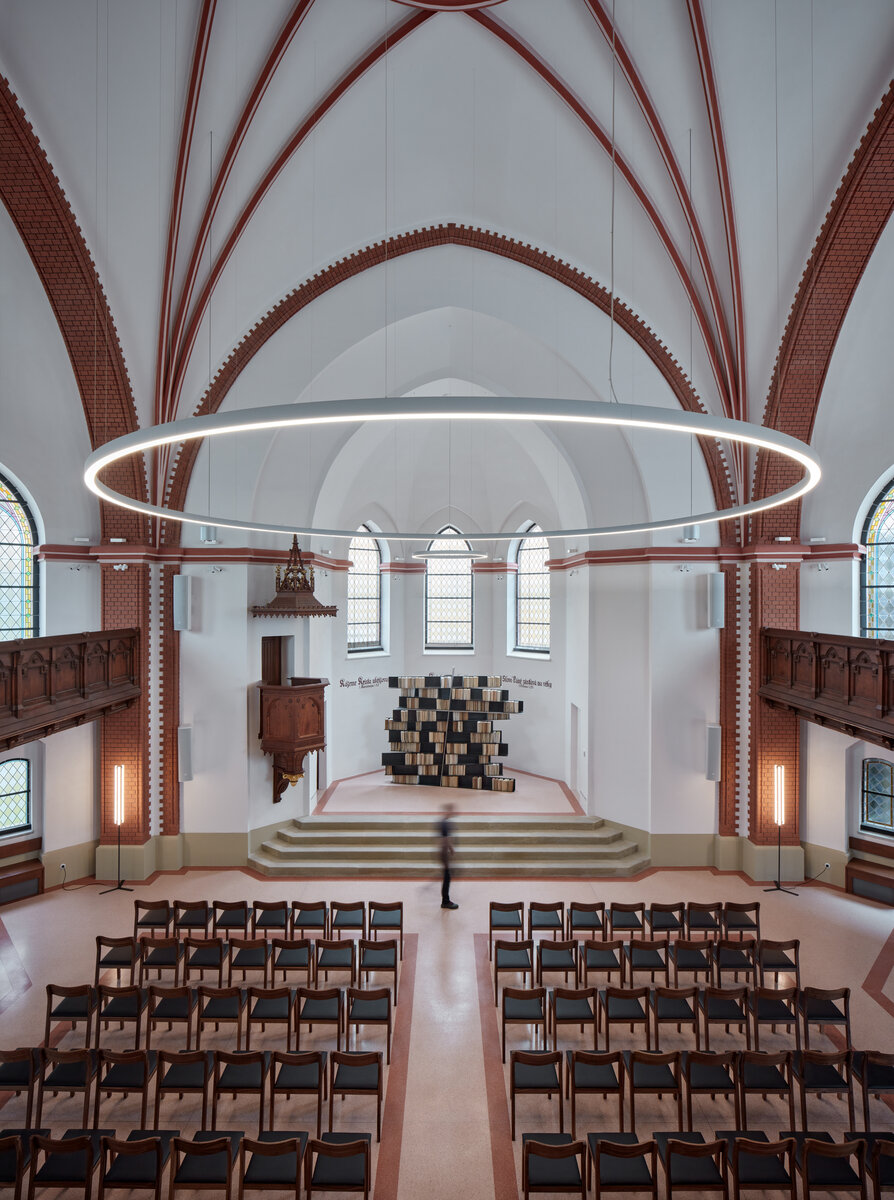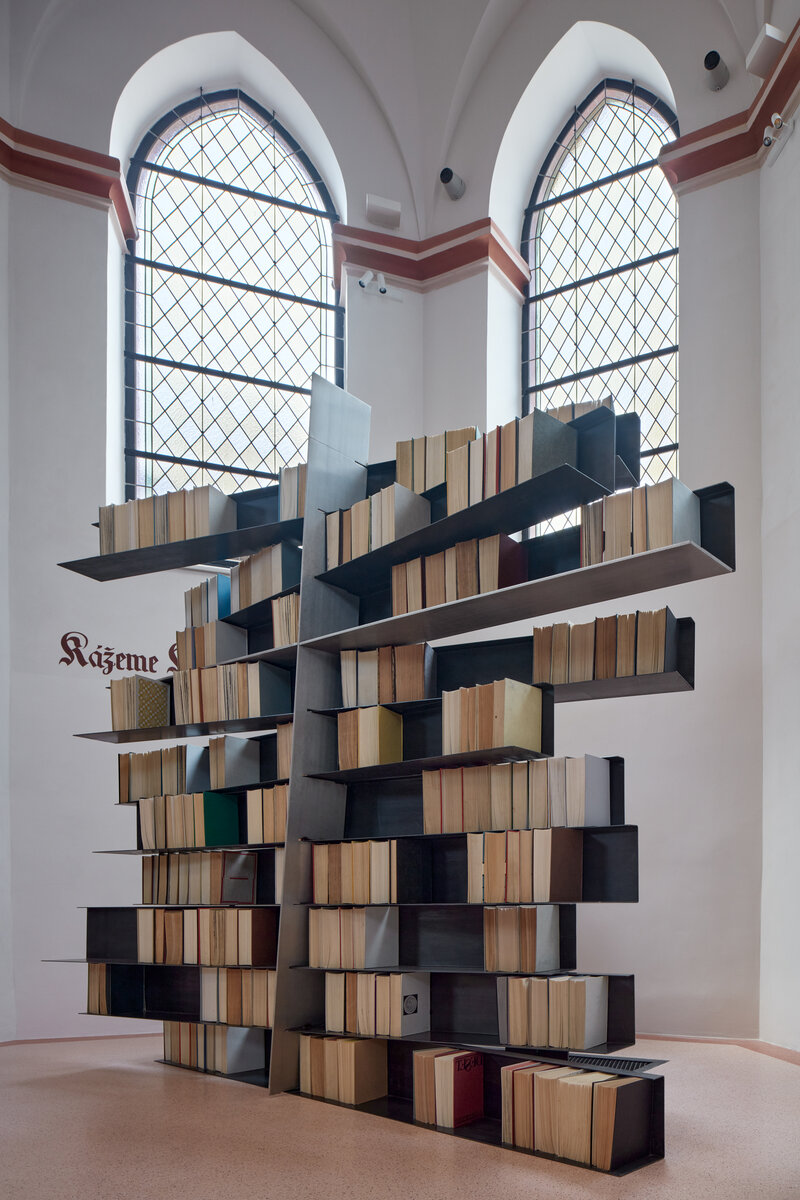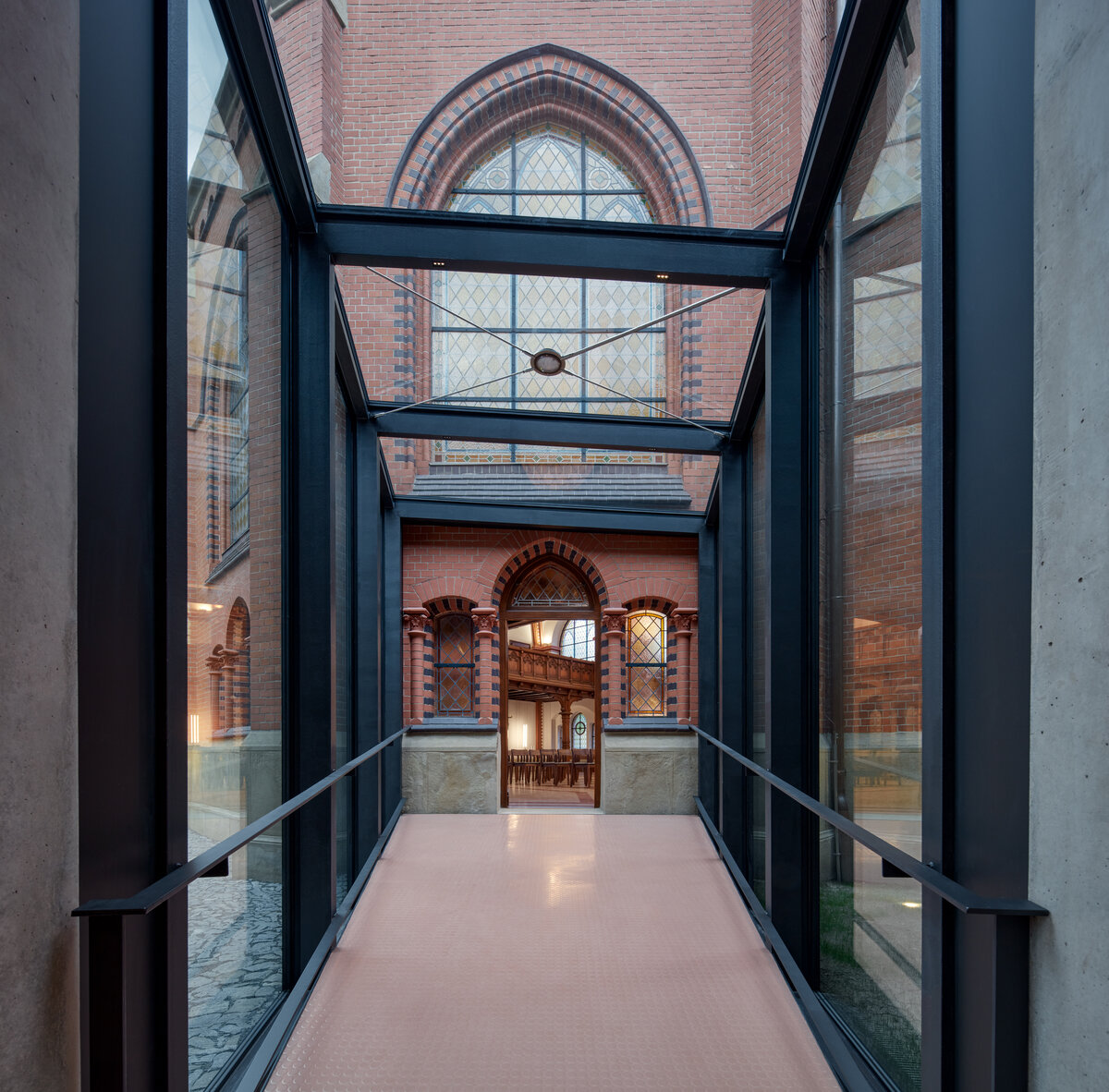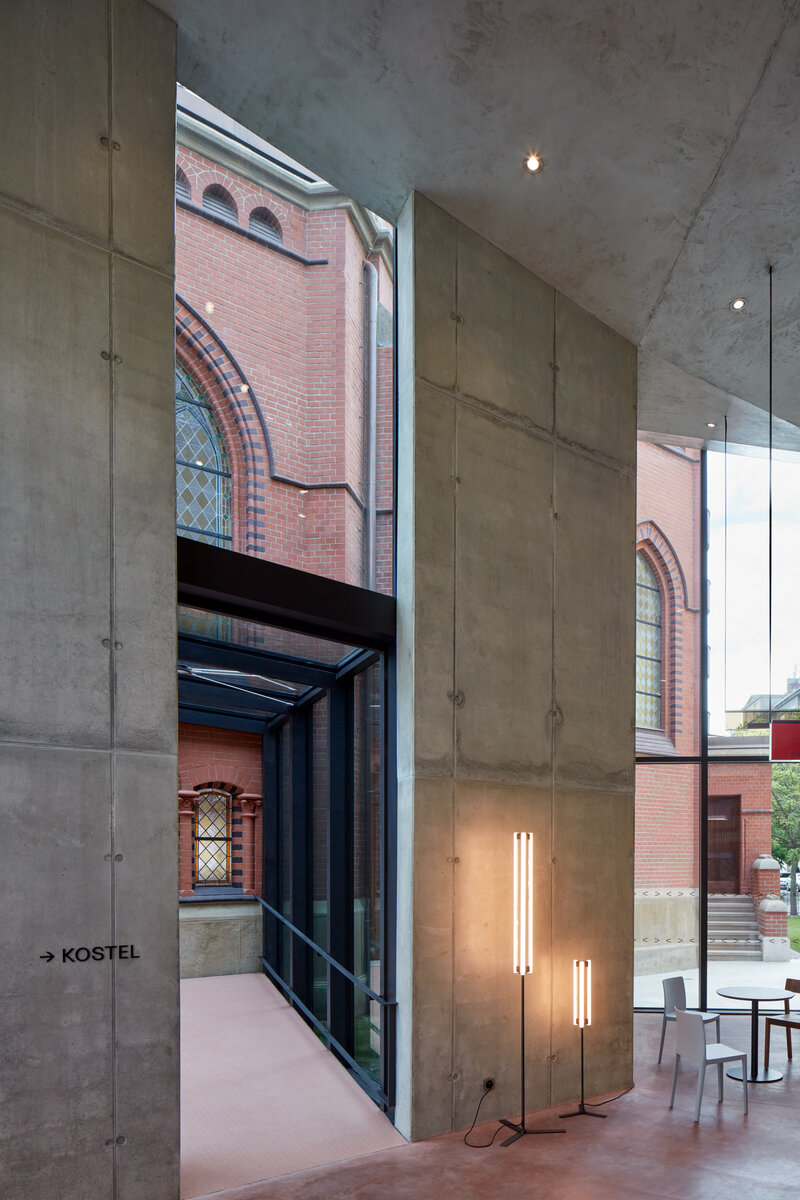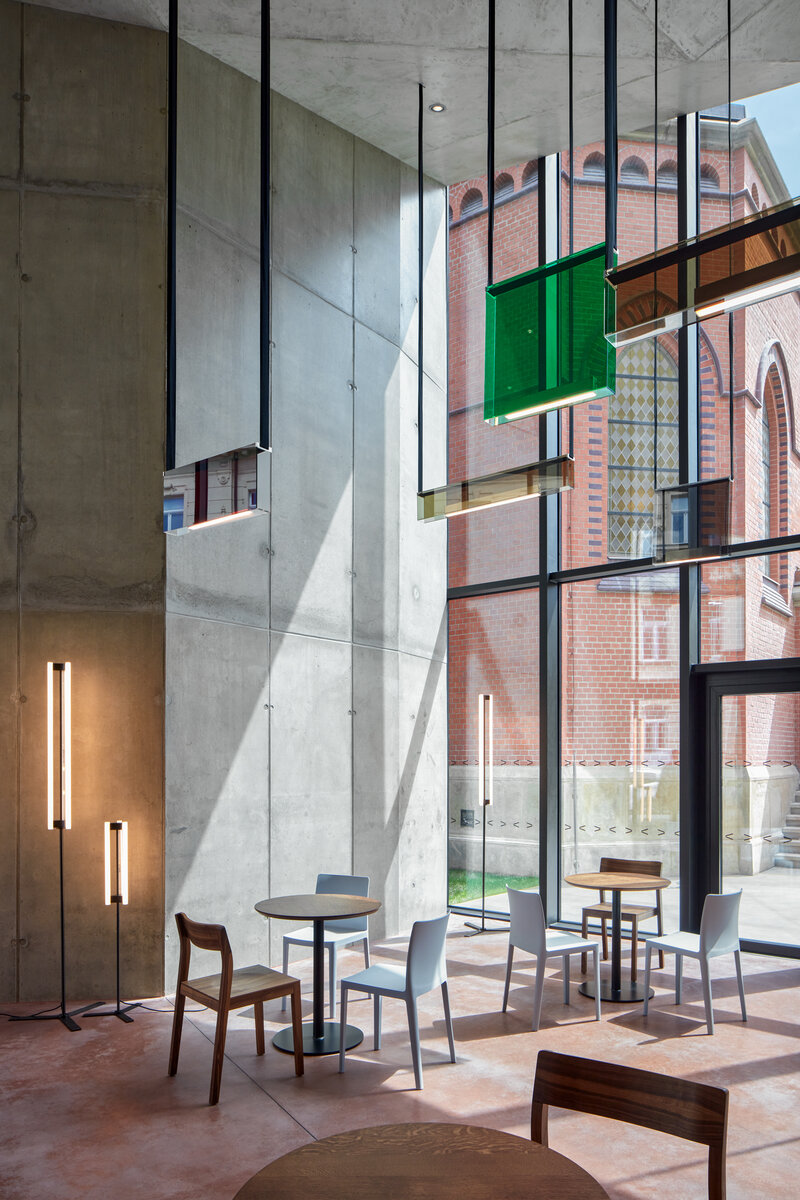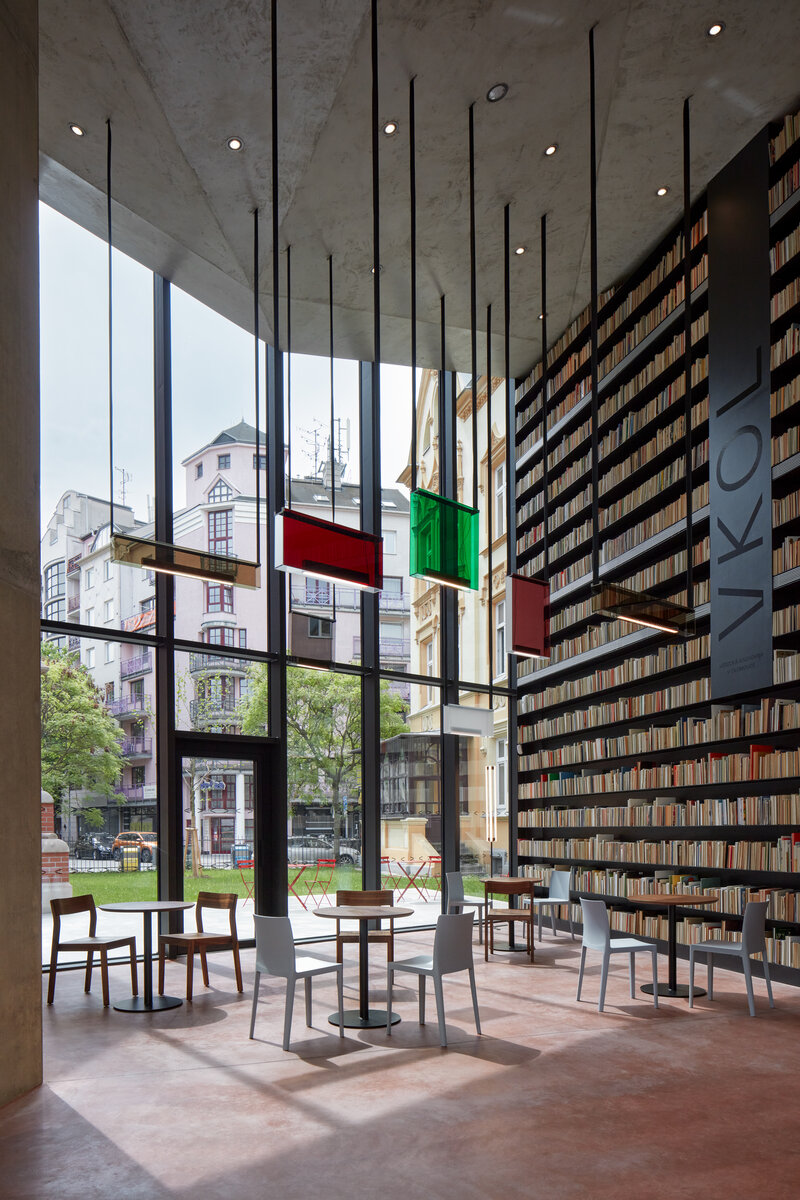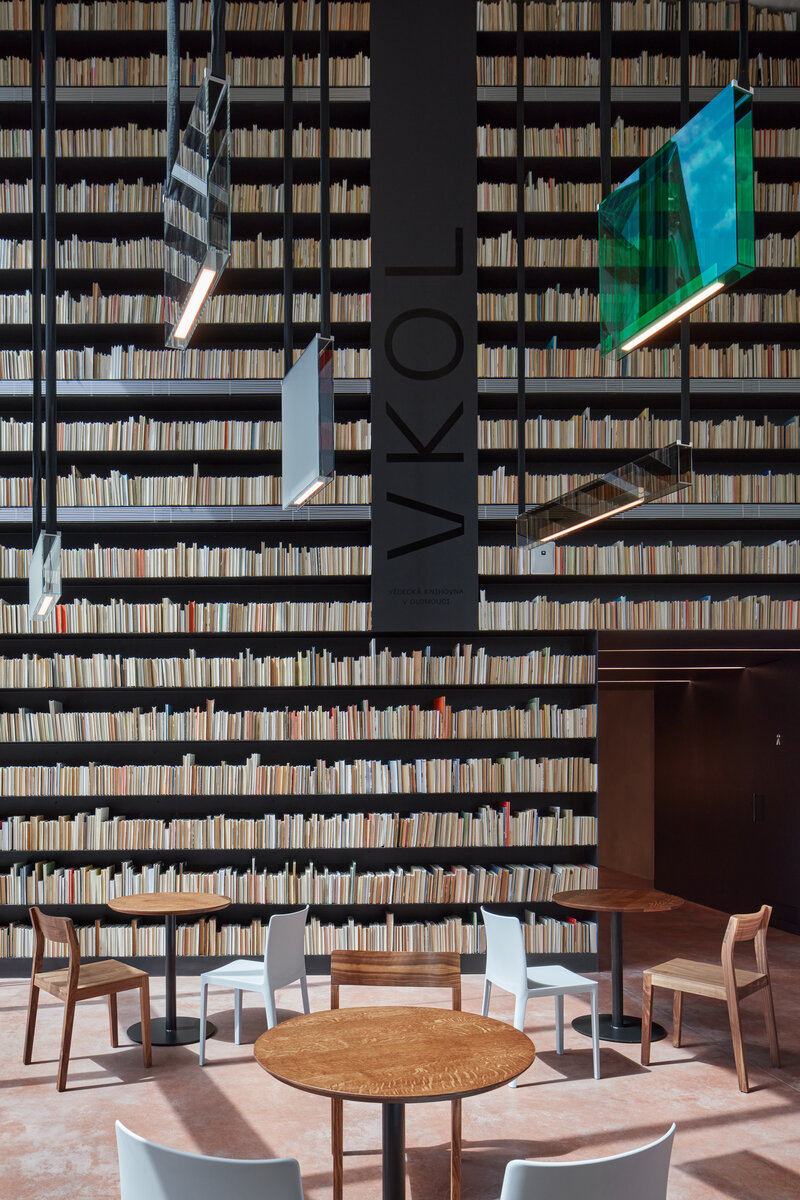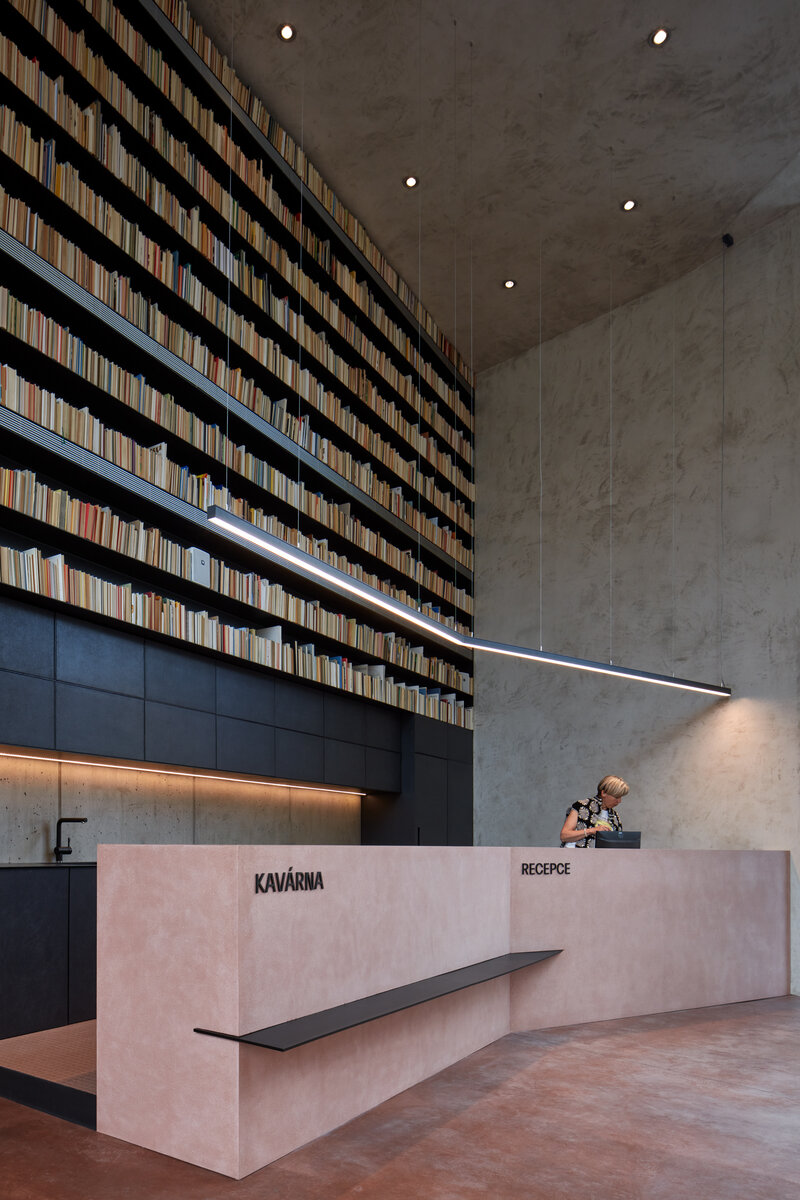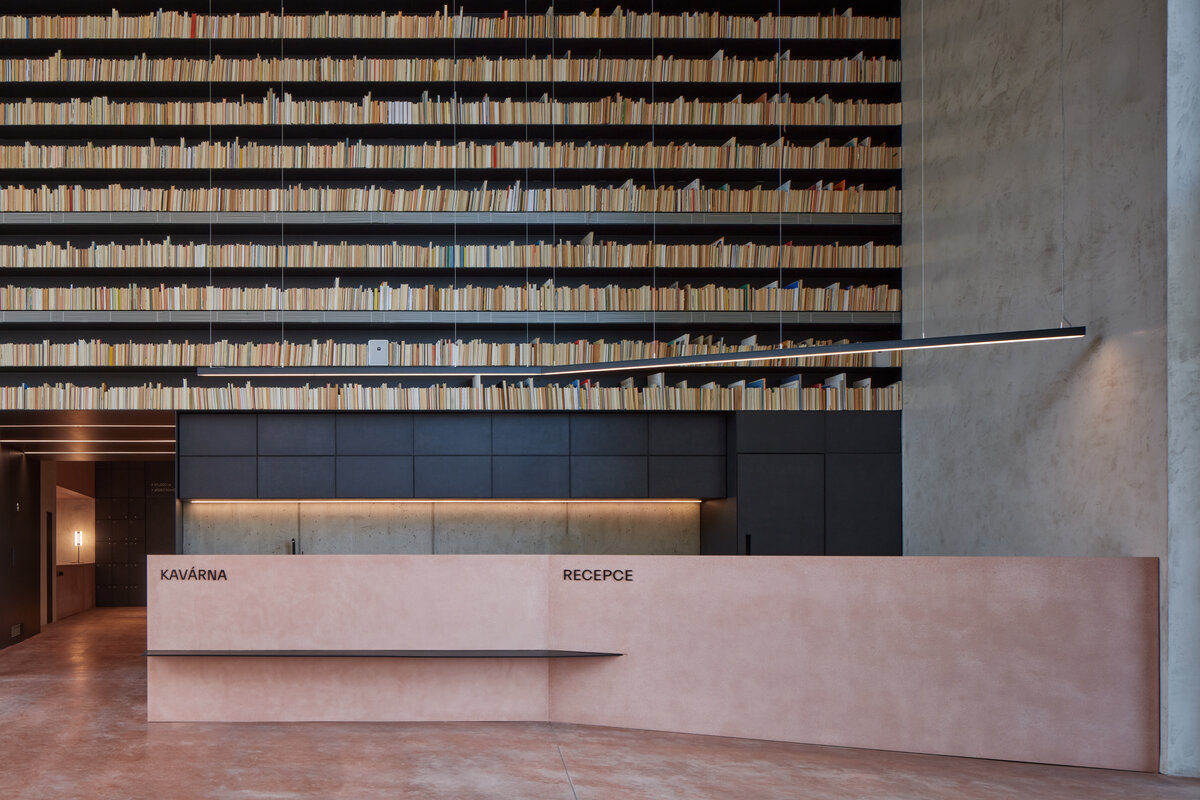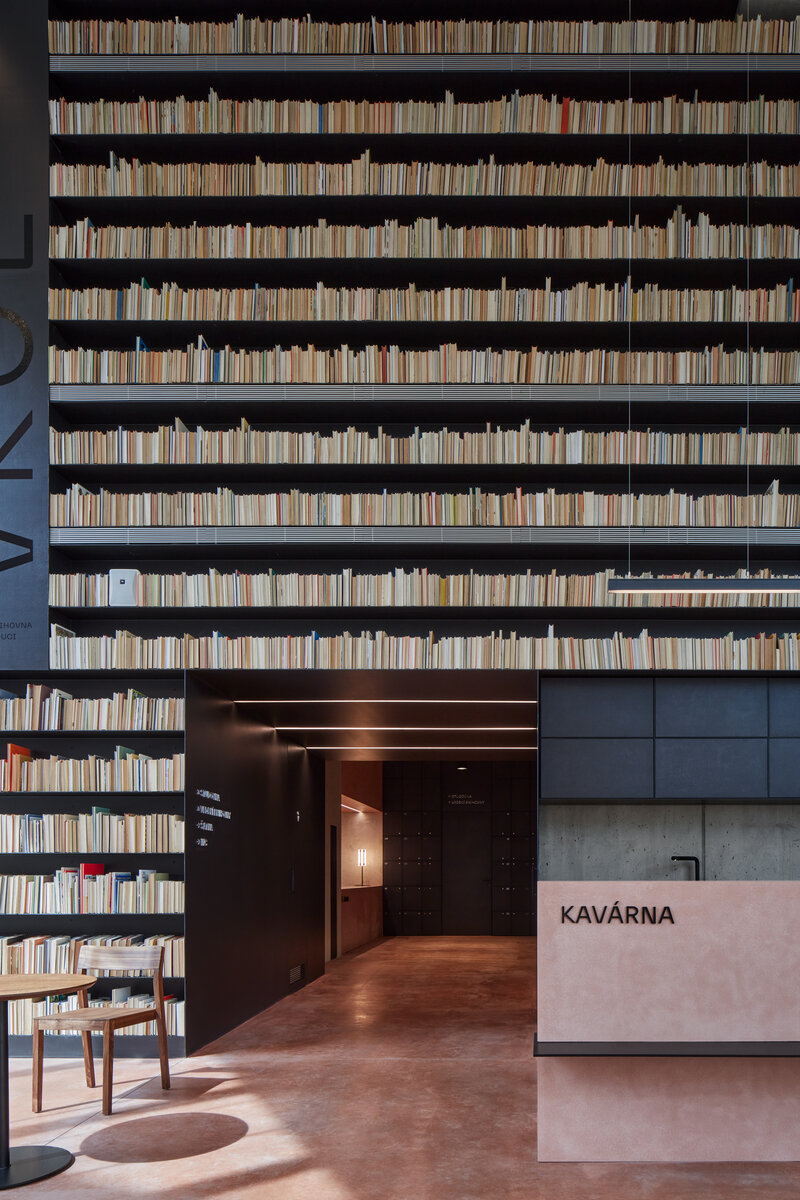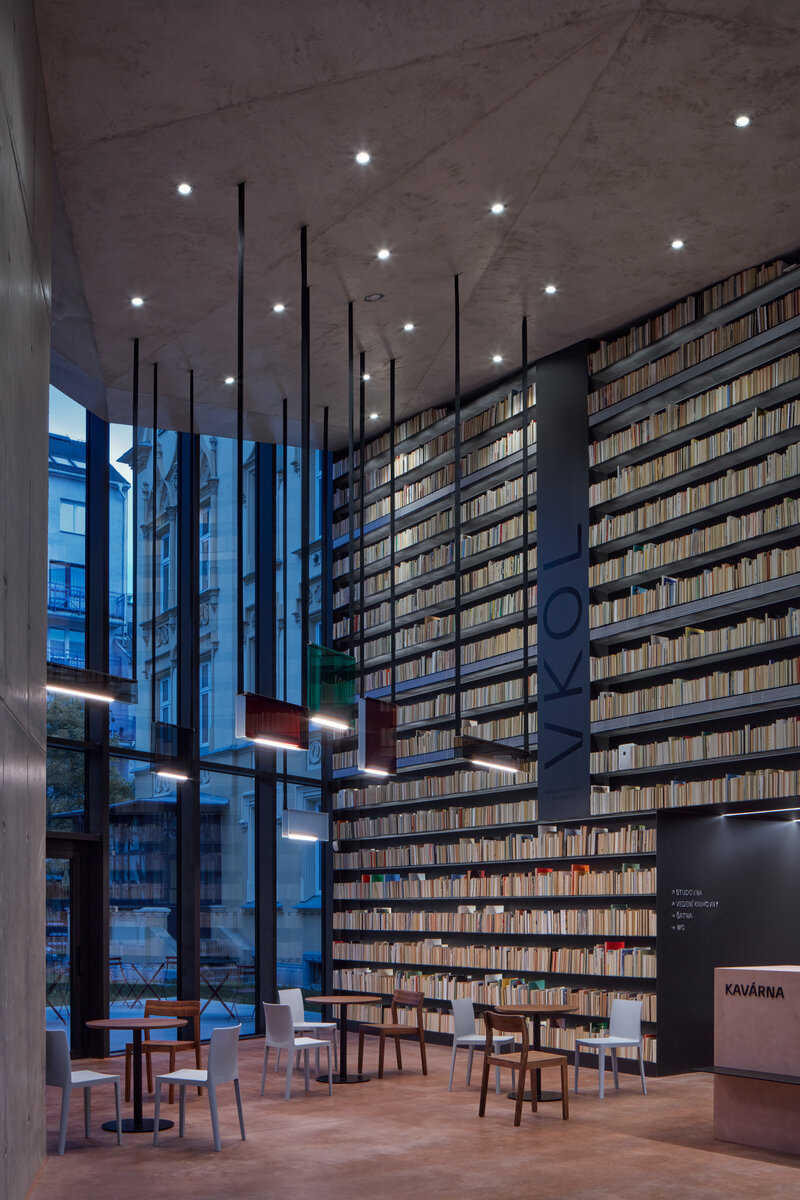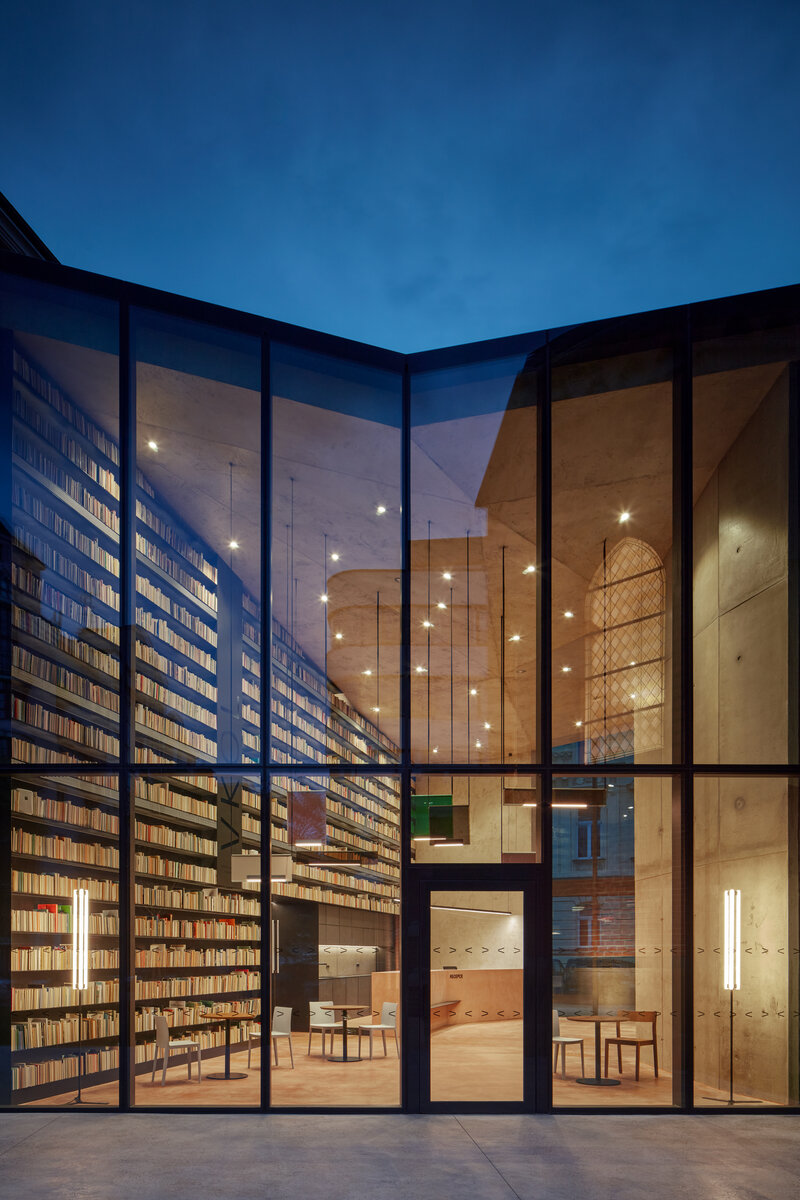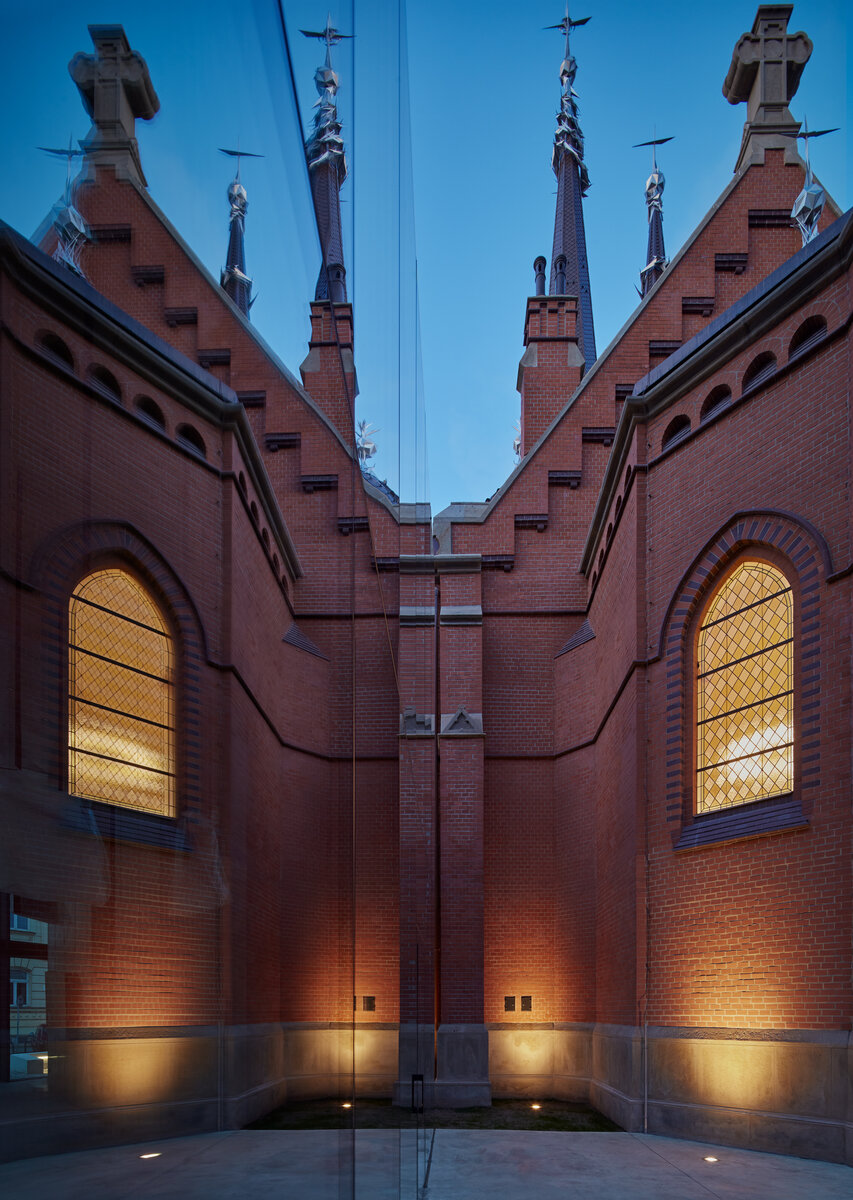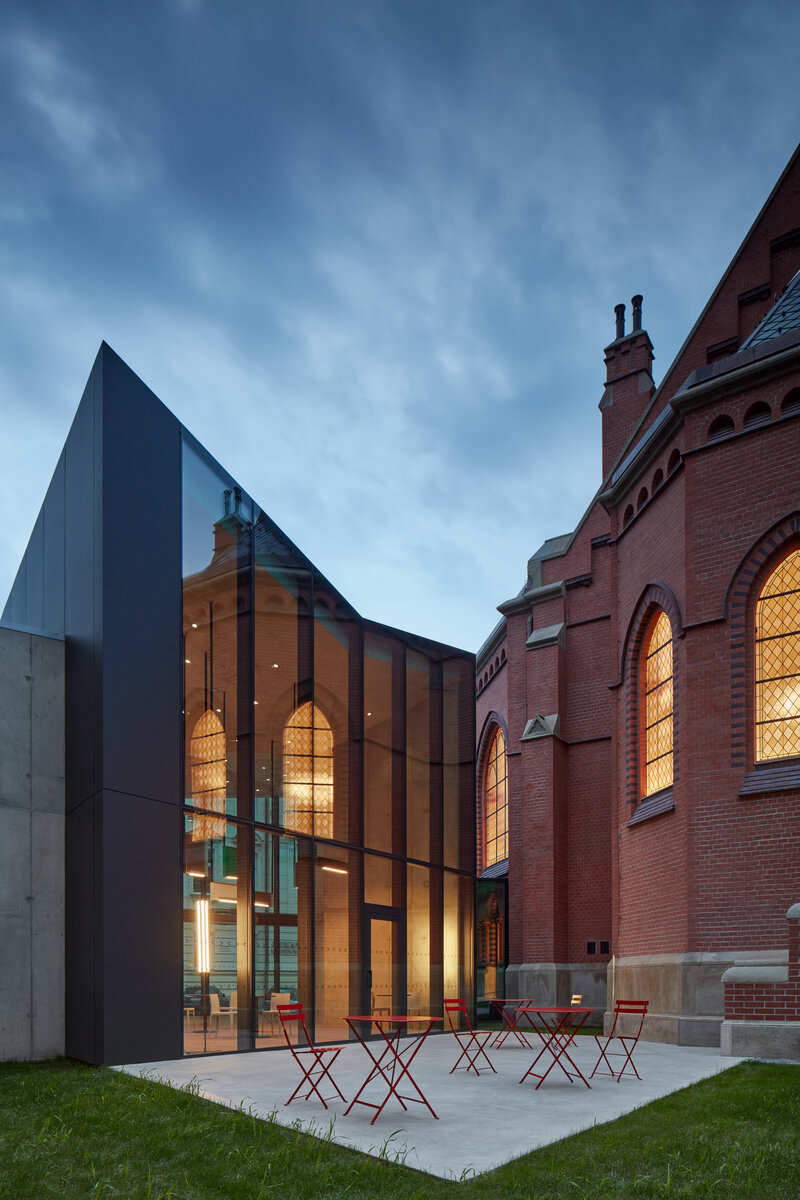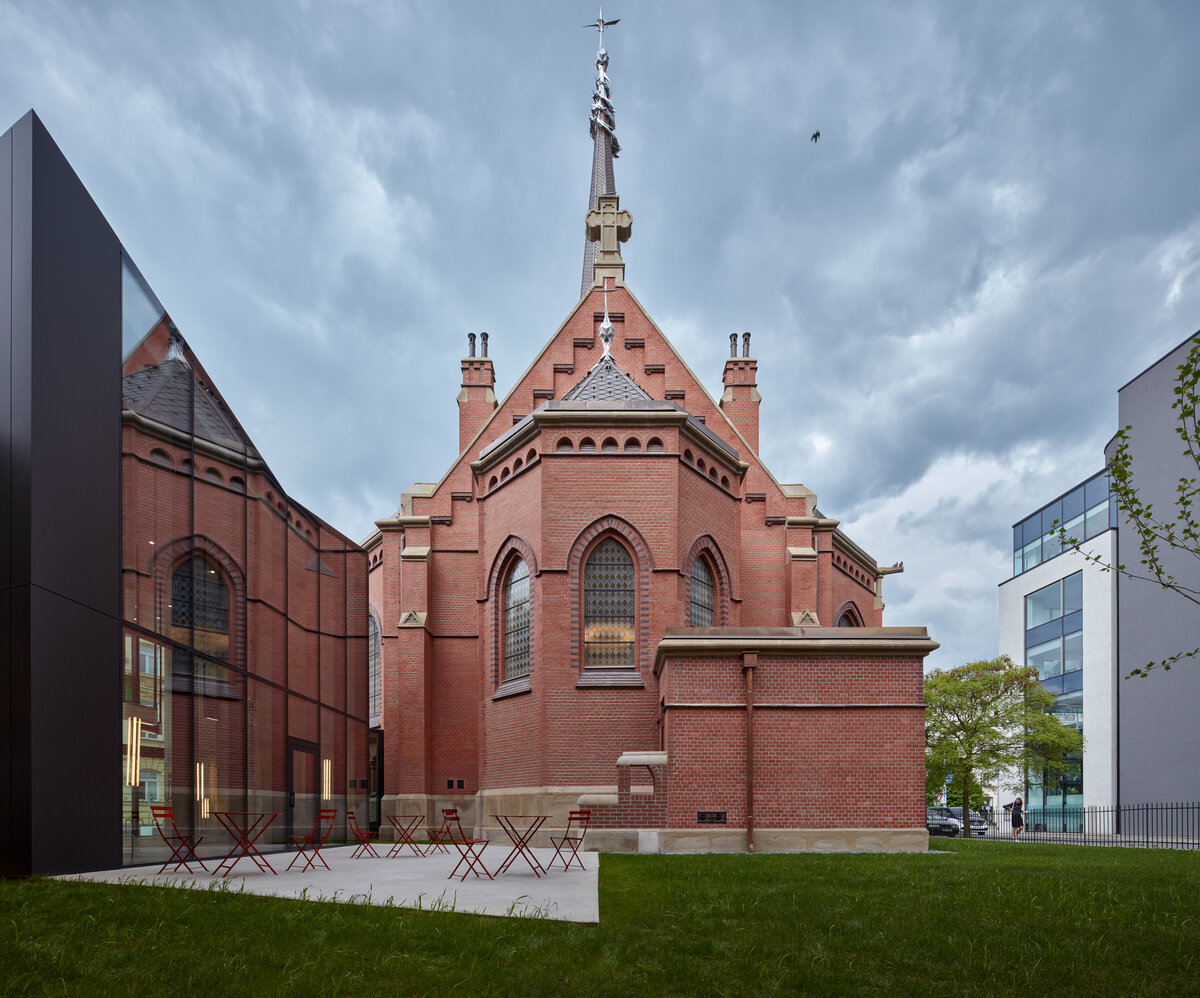| Author |
Miroslav Pospíšil, spoluautor: Daria Johanesová, Denisa Kubíčková Strmisková |
| Studio |
atelier-r |
| Location |
Bezručova 1180/3, 779 00 Olomouc, Česká republika |
| Investor |
Olomoucký kraj, Jeremenkova 40a, 779 00 Olomouc |
| Supplier |
Společnost Červený kostel (sdružení firem STRABAG a.s. a OHLA ŽS a.s.)
Purkyňova 648/125, 612 00 Brno |
| Date of completion / approval of the project |
March 2023 |
| Fotograf |
BoysPlayNice |
Olomouc Research Library has been using the Red Church as a book depository since 1959 and this beautiful Lutheran church has been completely closed to the public during all those years. The owner of this listed building, Olomouc Region, decided to construct a new library building to fulfill the storage needs and so free up the Red Church for cultural purposes such as smaller concerts, public readings, lectures, or art shows. Additionally, the Red Church is intended to be an information center for the Research Library and Olomouc Region.
The crystal-like mass of the annex responds to the neo-Gothic form of the church; it derives from its geometric shape, volume, and layout. The floor plan is a cut-out of the part of the church floor plan, only moved outside of the original platform. The walls and the rooftop are made of matte black aluminum.
The public space around the church is another compelling addition to the project. Where once there was a fence, there is a piazzeta with seating arrangements and suitable greenery now.
Atelier-r designed the concept and philosophy of the interior spaces and asked for collaboration with Denisa Strmiskova Studio which stands behind the detailed interior design elements such as the choice of lighting, or ready and custom-made furniture. Both atelier-r and Denisa Strmiskova Studio closely collaborated on choosing the materials and surfaces.
The interior of the church was restored to its original state as much as possible, at least for the elements that were preserved. Instead of the altar, which has not been preserved, a screen from the workshop of the sculptor Jan Dostál was added to the presbytery. The lighting of the church is also contemporary.
The reception and the café are taking up the main space in the modern annex. It is made of pastel pink concrete. The pink colour also matches other surfaces throughout the space such as floors, furniture, or walls. Massive accent book wall dominates the interior. It is a tall wall filled with old books that are backlit in the evening. There is a colourful glass light fixture hanging in front of the wall. The elegant and minimalist glass elements float in the air, suspended on the nylon ropes high above the visitors’ heads. Graphic studio KOSATKO collaborated on the project, designing a brand-new visual identity and the logo for the Olomouc Research Library.
Combining the overall reconstruction of the historical building with the new cultural and social functions was the main brief and focus of the design. The building was in a very poor condition. First, it was necessary to strengthen the foundations, mend the damp and salty masonry, repair the stucco and plaster, and tidy up and fill the gaps in the facade cladding. The floors were a complete redo including the layers all the way down to the terrain base. The reconstruction of the roof was one of the most critical updates. The trusses have been severely damaged by the rain, they could have collapsed at any point. The studio decided to do a complete makeover with maximum effort to retain the original elements. The new roof was made of copper squares that copy the same shape and format as the original roof. The authentic decorative elements did not stand the test of time sadly, so the studio worked together with renowned Olomouc sculptor Jan Dostal who created contemporary artifacts to be placed there instead.
Extra space for operation and facilities was required for the new functionality of the building, but it did not fit in the main body of the church. To avoid significant construction changes to the existing heritage building, the studio decided to add on a new mass that would serve operational purposes. The new building is placed right in between the church and the library directory, linking the two together. There is a common entrance hall with a reception and a café. The new construction respects the Bezrucova Street line and keeps enough indent from the existing buildings.
Green building
Environmental certification
| Type and level of certificate |
-
|
Water management
| Is rainwater used for irrigation? |
|
| Is rainwater used for other purposes, e.g. toilet flushing ? |
|
| Does the building have a green roof / facade ? |
|
| Is reclaimed waste water used, e.g. from showers and sinks ? |
|
The quality of the indoor environment
| Is clean air supply automated ? |
|
| Is comfortable temperature during summer and winter automated? |
|
| Is natural lighting guaranteed in all living areas? |
|
| Is artificial lighting automated? |
|
| Is acoustic comfort, specifically reverberation time, guaranteed? |
|
| Does the layout solution include zoning and ergonomics elements? |
|
Principles of circular economics
| Does the project use recycled materials? |
|
| Does the project use recyclable materials? |
|
| Are materials with a documented Environmental Product Declaration (EPD) promoted in the project? |
|
| Are other sustainability certifications used for materials and elements? |
|
Energy efficiency
| Energy performance class of the building according to the Energy Performance Certificate of the building |
C
|
| Is efficient energy management (measurement and regular analysis of consumption data) considered? |
|
| Are renewable sources of energy used, e.g. solar system, photovoltaics? |
|
Interconnection with surroundings
| Does the project enable the easy use of public transport? |
|
| Does the project support the use of alternative modes of transport, e.g cycling, walking etc. ? |
|
| Is there access to recreational natural areas, e.g. parks, in the immediate vicinity of the building? |
|
